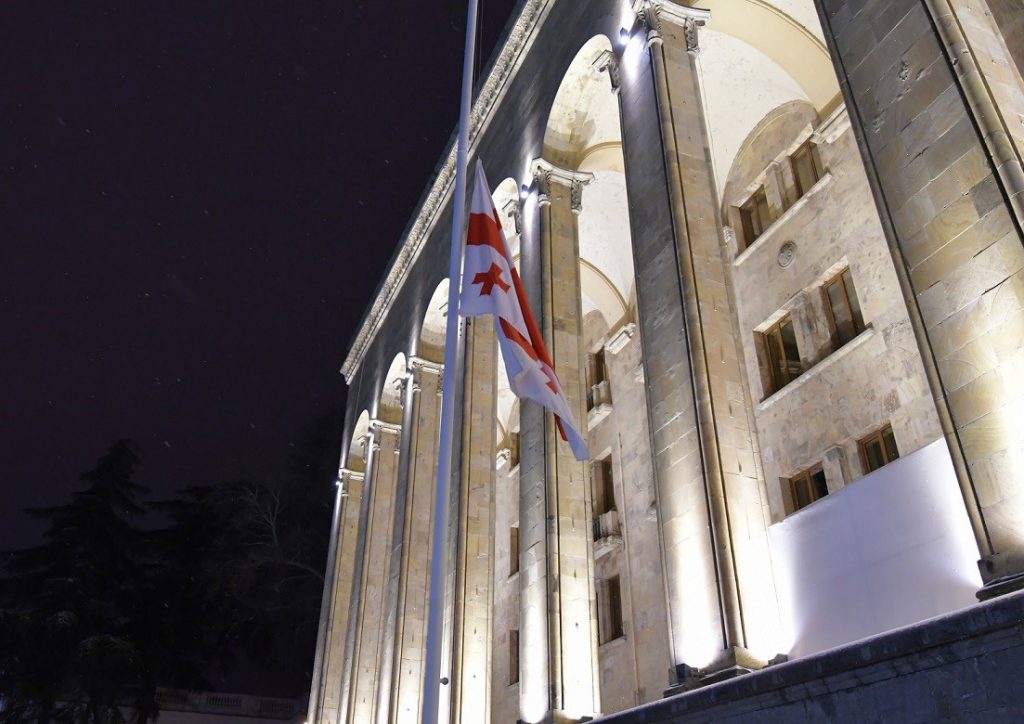Government buildings in Georgia lowered national flags to half-staff on February 25, as the country marks the Day of Soviet Occupation, one hundred years after the Red Army took over the capital city Tbilisi.
Prime Minister Irakli Garibashvili, alongside Parliament Speaker Archil Talakvadze, Defense Minister Juansher Burchuladze, and Tbilisi Mayor Kakha Kaladze, laid flowers at the memorial of Georgian junkers (cadets) killed during the defense of Tbilisi in February 1921.
At the wreath-laying ceremony in the outskirts of the capital, PM Garibashvili spoke of unity: “Our heroes, among them the junkers, sacrificed their lives for the nation’s independence and freedom. This day once again reminds us, that despite the temporary occupation of our country, our path goes along strengthening the country, democracy, economic development, and well-being… Our common goal must be to unite our country, people, and nation.”
The Day of Soviet Occupation is officially marked in Georgia after the Parliament passed a resolution in 2010 instructing the government to organize various memorial events every February 25 to commemorate, as the decision puts it, hundreds of thousands of victims of political repressions of the Communist occupational regime.
Soviet Russia launched the invasion of the Democratic Republic of Georgia on the night of February 11-12, 1921, in spite of recognizing it nine months earlier. The Red Army marched in Tbilisi on February 25, after days of heavy battles around the Georgian capital, marking the onset of 70-year Soviet occupation. The Georgian resistance continued for some five weeks, as the Government first moved to Kutaisi, and later to Batumi, from where it left the country to France on March 17, 1921. The country restored its independence from the USSR on April 9, 1991.
This post is also available in: ქართული (Georgian) Русский (Russian)

